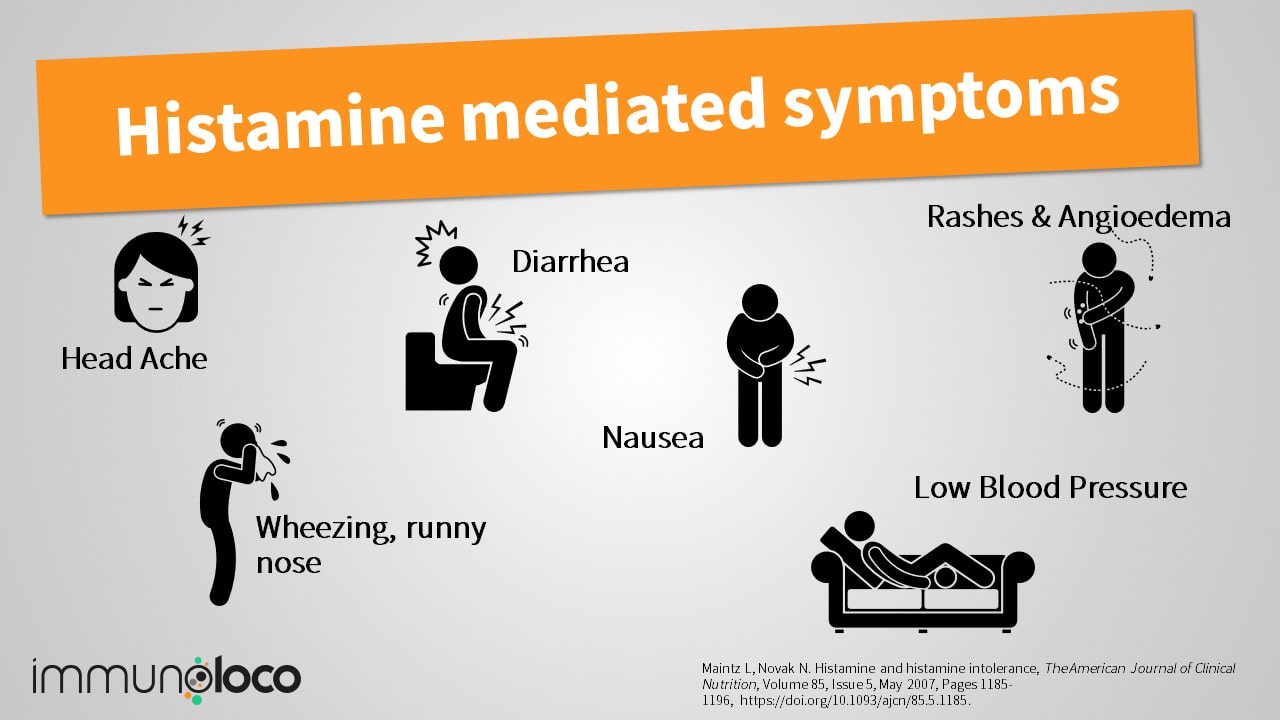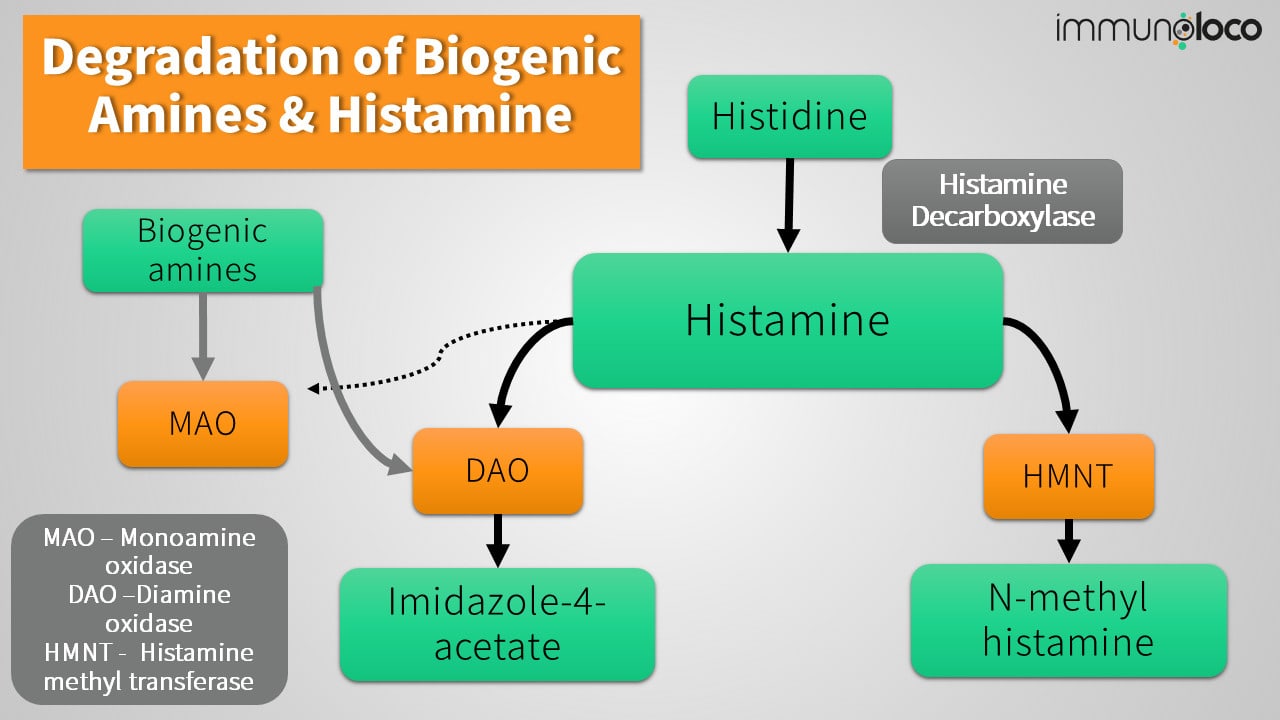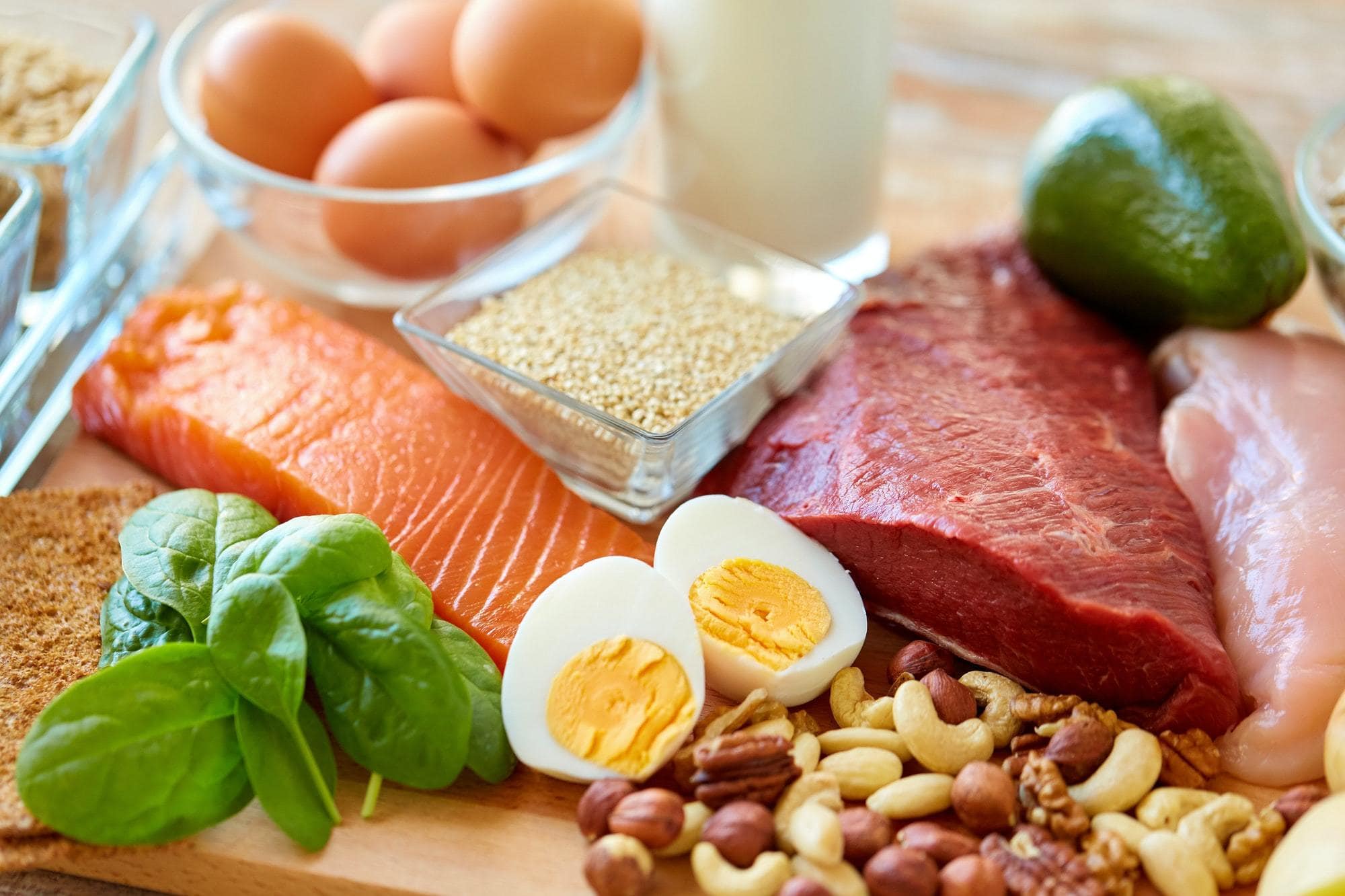
First, I want to note that a sufficient supply of protein and, above all, essential amino acids, which the body cannot produce itself, is critical for good health. Particularly in patients who, due to mast cell activation syndrome (MCAS) or food intolerances, only eat limited amounts of food, it is crucial to ensure a sufficient intake of protein and, above all, essential amino acids.
However, some amino acids should only be taken with caution in histamine intolerance syndrome (HIS) or MCAS. For example, care should be taken with histidine and N-acetylcysteine (NAC – a stabilized form of the amino acid cysteine).
One should also consider that bacterial fermentation processes can convert the amino acids lysine, ornithine, and tyrosine into cadaverine, putrescine, and tyramine, which can be problematic in biogenic amine intolerance. Intolerance against other biogenic amine is common in people with histamine intolerance syndrome.1
This article is about a health issue. It is important that you have your symptoms examined and treated by medical professionals. This article is not intended to be, and cannot be, a substitute for the care and advice of medical professionals that may be available to you.
Histidine in Histamine Intolerance and Mast Cell Activation Syndrome
Histamine is generated in the body from histidine as a metabolic product of histidine decarboxylase. Histamine is broken down by diamine oxidase (DAO) and histamine methyltransferase (HNMT). In rarer cases and to a smaller extent, monoamine oxidase B (MAO) also plays a role in histamine degradation. I describe these processes in detail in the article regarding the causes of histamine intolerance.

An additional supply of histidine above the average level is thus able to increase the histamine level in the body. As a rule of thumb, one does not have to supplement this amino acid if one eats sufficient quantities in their diet.2
How Much Histidine Do You Need per Day?
However, histidine is one of the essential amino acids, and thus, the body cannot produce it. At least 8-12mg/kg histidine per day is needed to stay healthy. With a regular diet, Europeans consume between 2.12 and 2.40g per day, and in the US, the average amount consumed is even a bit higher.3
In addition, the amino acid’s breakdown product histamine also plays an essential role in the body, and too low histamine levels also prove to be problematic for health.
N-Acetylcysteine (NAC) in HIS & MCAS: Potential for Side Effects
N-acetylcysteine is a radical scavenger (antioxidant) that releases the amino acid cysteine after deacetylation in the liver. This amino acid is required for the formation of glutathione, another important antioxidant.4
NAC is used primarily as an expectorant for bronchitis but has also shown success in animal models in reducing lipid peroxidation, which results in cellular damage from free radicals and plays a notable role in atherosclerosis.4
N-acetylcysteine also improved the health status of rheumatoid arthritis patients in a smaller, double-blind, randomized study.5
However, N-Acetylcysteine (NAC) may cause increased histamine release from mast cells resulting in side effects in sensitive people and contradicting the beneficial effects from anti-inflammatory actions.6
In a study using intravenous NAC infusion in humans increased histamine levels were found in just a portion of the subjects. This increase was only present in those who complained of side effects.7
Because of the anti-inflammatory and immune-balancing properties that N-acetylcysteine appears to have, it is necessary to consider whether it can be used in mast cell- or histamine-mediated diseases.8 This evaluation should be made with the help of qualified medical personnel.
Interested in more information & knowledge?
Every now and then, and only when there’s something interesting for you. Currently less than once a month, but packed with information – unsubscribe at any time and free of charge.
Lysine in Histamine Intolerance & MCAS: Likely Safe
Lysine is often used in complementary medicine for the prevention of recurrent herpes infections. It is an essential amino acid and everybody should make sure to take in sufficient amounts through food.
In an experiment with human mast cells, lysine solution impacted skin mast cells but resulted in no reactions from lung, intestinal, or otherwise localized mast cells in humans.9,10
Thus, one can assume that this amino acid is very unlikely to be problematic for people with allergic diseases: Still, it would be best to have a sufficient dietary intake so that no additional supplementation is needed.
It is crucial to ensure that protein, and thus often lysine-rich foods, are freshly processed to prevent the breakdown of lysine to the protein rot substance cadaverine. Cadaverine (1,5 diaminopentane) is a biogenic amine harmful to health, and it has a very unpleasant odor.11
It goes without saying that unpleasant-smelling protein products should no longer be consumed but should be disposed of.

Tyrosine in HIS & MCAS
The non-essential amino acid L-tyrosine is derived from the essential amino acid phenylalanine. Tyrosine is needed in the human body to produce thyroid hormones (L-thyroxine) and various brain chemical messengers (neurotransmitters) such as dopamine and norepinephrine.
Tyrosine by itself does not contain histamine, but when bacteria metabolize it, tyramine gets produced. This biogenic amine often causes problems in histamine or biogenic amine intolerance.
Since neurotransmitters also influence mast cells, one should ensure an adequate supply of proteins and amino acids such as L-phenylalanine. The body needs this essential amino acid to supply neurotransmitters in decent amounts. As a rule of thumb, when consuming enough protein, no additional tyrosine intake is required in most cases.
References
1. Biogene Amine – Chemie.de Lexikon. Accessed August 12, 2021. https://www.chemie.de/lexikon/Biogene_Amine.html
2. Gesundheitliche Bewertung von Aminosäuren – BfR. Accessed August 12, 2021. https://www.bfr.bund.de/de/gesundheitliche_bewertung_von_aminosaeuren-54420.html
3. Moro J, Tomé D, Schmidely P, Demersay T-C, Azzout-Marniche D. Histidine: A Systematic Review on Metabolism and Physiological Effects in Human and Different Animal Species. Nutrients. 2020;12(5). doi:10.3390/nu12051414
4. Gillissen A. N-Acetylcystein: Neue Erkenntnisse zu einem bewährten Wirkstoff. Pharmazeutische Zeitung online. Accessed August 16, 2021.
5. Batooei M, Tahamoli-Roudsari A, Basiri Z, et al. Evaluating the Effect of Oral N-acetylcysteine as an Adjuvant Treatment on Clinical Outcomes of Patients with Rheumatoid Arthritis: A Randomized, Double Blind Clinical Trial. Rev Recent Clin Trials. 2018;13(2):132-138. doi:10.2174/1574887113666180307151937
6. Barrett KE, Minor JR, Metcalfe DD. Histamine secretion induced by N-acetyl cysteine. Agents Actions. 1985;16(3-4):144-146. doi:10.1007/BF01983123
7. Waring WS, Bateman D. Histamine release is the associated mechanism following acetylcysteine adverse reaction in man. Clinical Toxicology. 2008;46:396.
8. Wang J, Jin Q, Hu Z, Zhou H. The effects of N-acetylcysteine on the Th1/Th2 ratio in elderly patients with chronic obstructive pulmonary disease. :6.
9. Lowman MA, Rees PH, Benyon RC, Church MK. Human mast cell heterogeneity: Histamine release from mast cells dispersed from skin, lung, adenoids, tonsils, and colon in response to IgE-dependent and nonimmunoiogic stimuli. Published online 1988:8.
10. Padawer J. The reaction of rat mast cells to polylysine. J Cell Biol. Published online 1970:352.
11. Hirai K. ÜBER DIE BILDUNG VON CADAVERIN AUS d-LYSIN DURCH BACILLUS LACTIS AEROGENES. The Journal of Biochemistry. 1939;29(3):435-438. doi:10.1093/oxfordjournals.jbchem.a125822
Immunoloco unterstützen
immunoloco möchte Betroffenen kostenlos gute und hilfreiche Informationen rund um ein verrücktes Immunsystem bieten. Du findest das gut? Dann unterstütze immunoloco und meine Arbeit doch gerne. Jeder Euro zählt und hilft, das Projekt weiterleben zu lassen.

Hi. One of my “citizens scientist” researcher friends shared your article. I’m a king hauler with some unusual symptoms such as very hyperglycemia and severe dizziness. I’m now focusing on the effects of chronic mass cell activation as one of the potential causations.
Also, I have started OPTIMYZI to develop an analytical model to determine the effects of chronic inflammatory responses correlating to various illnesses.
Hi,
that sounds very interesting – thanks for stopping by.